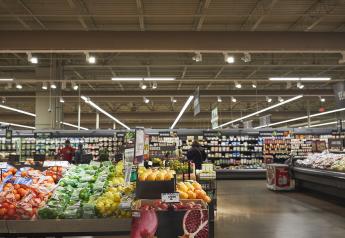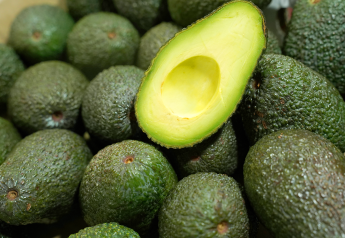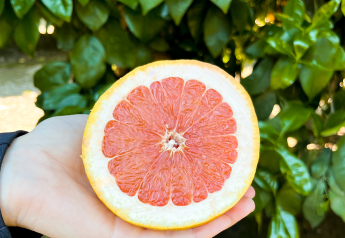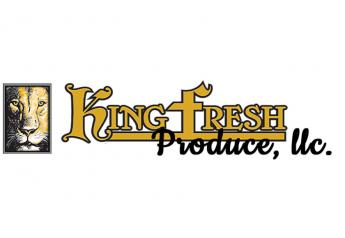USDA unveils Coronavirus Food Assistance Program

With $2.7 billion targeted to the fruit and vegetable industry, the $19 billion Coronavirus Food Assistance Program was unveiled by Agriculture Secretary Sonny Perdue on April 17.
Of the $2.7 billion, $2.1 billion will be direct payments. The remaining $600 million will be for produce purchases over the next six months. Industry leaders, who had estimated industry losses at more than $5 billion and growing on March 23, said the aid was appreciated but not enough.
“From the moment that the foodservice channel was shut down, we’ve worked hard with our members and allied produce associations across the country to formulate a plan for the government to help those who have been hit the hardest,” Tom Stenzel, president and CEO of the United Fresh Produce Association, said in a news release.
“Working together with the co-chairs of the Specialty Crop Farm Bill Alliance – Florida Fruit and Vegetable Association, National Potato Council, and Western Growers – we have collectively developed specific proposals supported by the broad fruit and vegetable industry to outline our needs to USDA and the administration,” he said in the release.
Details of the fruit and vegetable package, according to industry groups, are:
- $2.1 billion in payments to growers and grower-shippers of fresh produce for demonstrated losses caused by the COVID-19 pandemic, with a commitment to relieve the debts of PACA-licensed buyers for losses covered by government payments; and
- $100 million/month for the next six months in a new “Buy Fresh” program funded through the Families First Coronavirus Response Act, in which the federal government will purchase fresh produce and pay for its delivery to food banks, curb-side school pick-up sites, and other non-profit institutions.
“Our coalition has begun to work immediately with USDA and our allied partners to ensure that these programs address the most urgent needs for the industry,” Stenzel said in the release. “Also, we’ll continue our push with Congress to allocate the resources needed to support our industry.”
Less than enough
Industry leaders said losses from the COVID-19 pandemic are massive.
“Florida specialty crop growers have suffered more than $520 million in losses for this season,” Mike Joyner, president of the Florida Fruit & Vegetable Association, said in the release. “The programs announced today do not reach a level that would benefit Florida specialty crop producers at the level that is desperately needed. This is a first step, but much more is needed to ensure that a key driver of Florida’s damaged economy can return to strength.”
Sixty percent of annual U.S. potato sales of $4 billion involve foodservice, according to a statement from Kam Quarles, CEO of the National Potato Council.
“Potato growers appreciate Secretary Perdue’s rapid action intended to stabilize family farms whose survival is threatened due to the mandated foodservice shutdown,” Quarles said in the statement. “Today’s announcement is a down payment on those efforts that will require additional resources and flexibility to deliver the necessary relief for our great potato industry.”
Dave Puglia, CEO of Western Growers, said in the release that the relief package provides a “very limited and conditioned first injection” of financial assistance. “Clearly, far more will be needed with more reasonable limits.”
Stenzel said the industry will lobby for more assistance.
“We appreciate the steps taken today, but also must reinforce to Congress that the funds available to agriculture are simply inadequate to keep our industry strong into the future. The programs announced today will limit our ability to reach those who were most impacted by the tragic events around the COVID-19 pandemic,” Stenzel said in the release.
USDA plan
Using funding from the Coronavirus Aid, Relief, and Economic Security Act (CARES), the Families First Coronavirus Response Act (FFCRA), and and existing USDA programs, the Coronavirus Food Assistance Program has two main programs, according to the release.
The USDA did not include how much each ag sector would receive, but according to a news release from Sen. John Hoeven, R-N.D., it is:
- 9.6 billion for the livestock industry ($5.1 for cattle, $2.9 for dairy and $1.6 for hogs);
- $3.9 billion for row crop producers;
- $2.1 billion for specialty crops producers; and
- $500 million for others crops.
The $16 billion is for actual losses for “where prices and market supply chains have been impacted.” The program, the release said, will assist producers with additional adjustment and marketing costs resulting from lost demand and short-term oversupply for the 2020 marketing year caused by COVID-19.
Hoeven said in the release that producers will receive a single payment determined by using two calculations:
- Price losses that occurred January 1-April 15. Producers will be compensated for 85% of price loss during that period; and
- Expected losses from April 15 through the next two quarters, and will cover 30% of expected losses.
The payment limit is $125,000 per commodity with an overall limit of $250,000 per individual or entity. Qualified commodities must have experienced a 5% price decrease between January and April. The USDA is expediting the rulemaking process for the direct payment program and expects to begin sign-up in early May to get payments out to producers by the end of May or early June.
For the second part of the program, the commodity purchases, the USDA will partner with regional and local distributors, whose workforce has been significantly affected by restaurant, hotel and other foodservice closings, to purchase $3 billion in fresh produce, dairy, and meat.
The USDA will begin with buying an estimated $100 million per month in fresh fruits and vegetables, $100 million per month in a variety of dairy products, and $100 million per month in meat products.
“The distributors and wholesalers will then provide a pre-approved box of fresh produce, dairy, and meat products to food banks, community, and faith-based organizations, and other non-profits serving Americans in need,” according to the release.
Beyond those targeted programs, the USDA will use other available funding to purchase and distribute food to those in need. That funding includes:
- Section 32 program funds: the USDA has up to an additional $873.3 million to purchase products for distribution to food banks.
- The FFCRA and CARES Act provided at least $850 million for food bank administrative costs and USDA food purchases, of which a minimum of $600 million will be designated for food purchases.
Further details about the program will be released later, according to the USDA.







